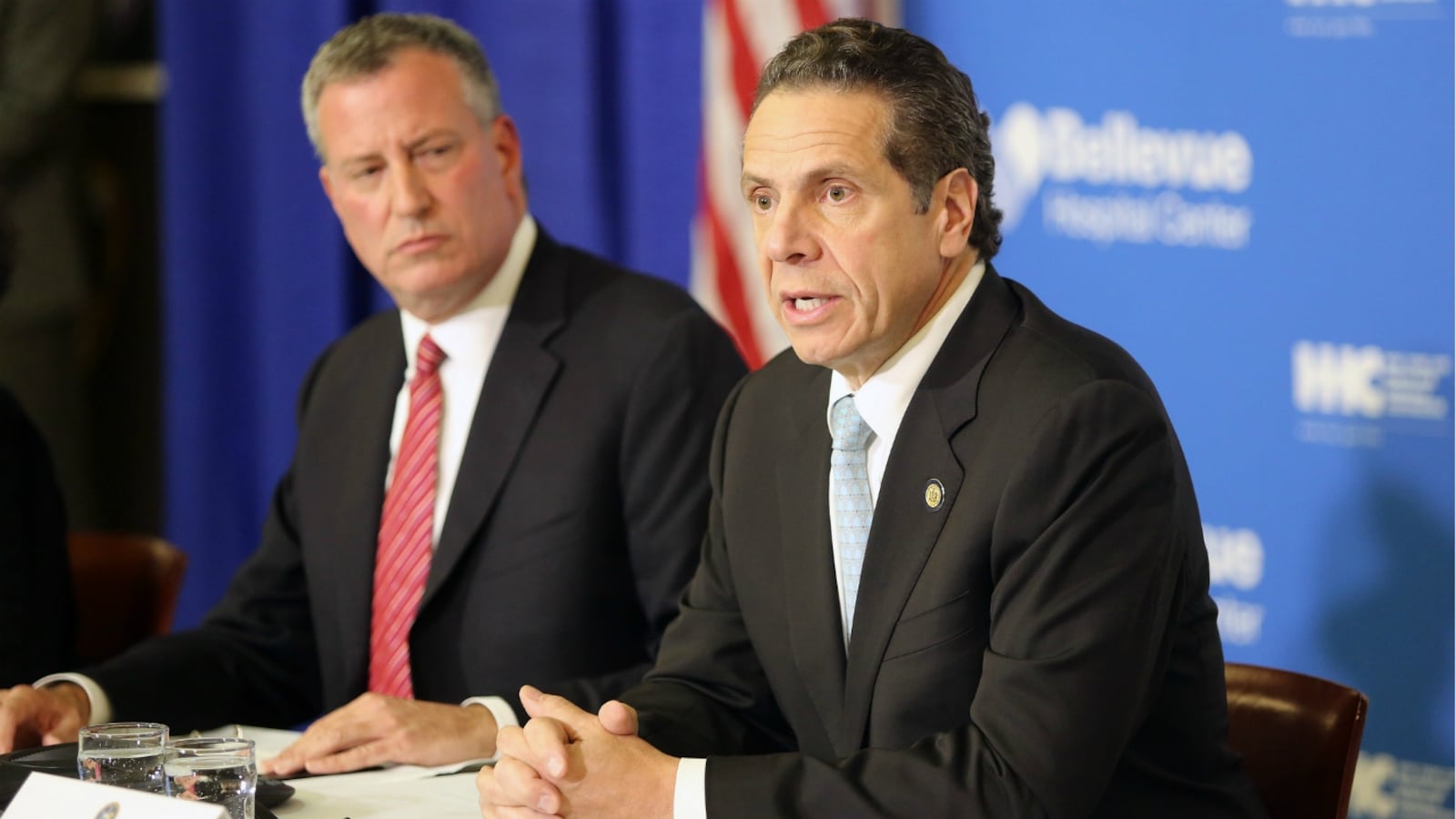The state named 62 low-performing New York City schools Thursday that the chancellor will be forced to hand over to an outside manager if she cannot swiftly revamp them.
The possible takeovers stem from a law proposed by Gov. Andrew Cuomo, which lays bare a debate between him and Mayor Bill de Blasio about the best way to prop up floundering schools. While de Blasio launched an expensive union-backed program last year that infuses struggling schools with extra resources and support, Cuomo’s plan would empower outside groups to take control of the schools, sidestep union rules, and potentially convert them into charter schools. The law, which passed in April, is a scaled back version of Cuomo’s plan.
Fifty of the schools the law targets are part of de Blasio’s turnaround program. However, the law expands Chancellor Carmen Fariña’s power to make certain changes at the schools, such as requiring all their teachers to reapply for their jobs. The city already forced the entire staffs at two troubled schools to re-interview for their jobs this year, and education department officials said Thursday that they would consider making the principals and teachers at the other state-identified struggling schools do the same.
[See the full list of schools facing takeover here.]
If those schools do not make quick gains under Fariña’s guidance, then she will have to cede control to an outside “receiver,” which could be a school-improvement expert or a nonprofit.
“In these schools, whole generations of students have been left behind,” said recently hired State Education Commissioner MaryEllen Elia, who is responsible for enacting the receivership law. “Superintendents have an obligation to act on conditions that have persisted for too long in these schools.”
Under pressure from the state teacher’s union, lawmakers modified Cuomo’s plan before approving it. The law gives districts at least a year to try to improve their schools before receivers are called in, lets them choose those receivers, and makes the receivers negotiate with the teachers unions before carrying out certain actions. It also comes with $75 million to fund improvements at the schools.
Still, the city and state unions have denounced the plan, saying that struggling schools need more resources and fewer harsh interventions. And de Blasio called it a “formula for disaster” earlier this year, saying the state should give the city’s “Renewal” turnaround program time to work.
In fact, New York may be better positioned under the new law than some cities. Many of the powers that receivers have under the law — such as the ability to bring new health and social services into the schools or extend their hours — are elements of the Renewal program. And the city could potentially expand the deal it already hashed out with the principals and teachers unions, which required the staffs at the two schools to re-interview for their jobs before joint city-union hiring committees.
“The schools designated are all schools that the DOE has already invested tremendous resources in and we are closely tracking all indicators of progress,” said city education department spokeswoman Devora Kaye. “There are no surprises.”
The 62 schools all rank among the bottom five percent in the state. Fifty-five of those schools have been in that category since 2012, and now have two years to hit improvement targets before a receiver would take control. The other seven have been bottom-ranked since 2006 and only have one year to post major gains. (One of those seven, P.S. 64 in the Bronx, is in the process of closing.)
The law gives Fariña the same authority as a receiver, which includes overhauling the schools’ curriculums, adjusting their budgets, and replacing their principals. Unlike other school chiefs across the state, Fariña already has the ability to do much of that because the mayor controls the city’s schools, not a school board.
If she chooses to make staffers reapply for their jobs, the law says she must form hiring panels that include her, two people she appoints, and two union appointees. The law also stipulates that no teachers who have been rated “ineffective” twice on their evaluations may be rehired, and at least half of a school’s senior teachers must be retained.
The city must create intervention plans for each of the schools that list goals around attendance, graduation rates, test scores, and discipline. The law gives the state education department until September to tell districts what those goals should be. If the schools fail to hit those targets, then Fariña must choose a receiver to oversee them.
The state has set aside $75 million for the 144 schools across New York that are affected by the new receivership law, but it was unclear Thursday how much of that would be directed to New York City. The city has budgeted more than $538 million over the next three years for its turnaround program. City officials said the 12 schools that could face receivership but are not in the Renewal program have still received extra funding and help from the city.
On Thursday, the head of a pro-charter school group said de Blasio should make the teachers at all 62 schools re-interview for their jobs. Otherwise, “he will be guilty of refusing to take easy steps to end this city’s failing schools crisis,” said Families for Excellent Schools CEO Jeremiah Kittredge.
The city teachers union chief said de Blasio’s program is best suited to revive the city’s struggling schools, not an outside overseer.
“Receivers have no magic wand,” said United Federation of Teachers President Michael Mulgrew. “We have seen that over and over again, in New York State and across the country.”


